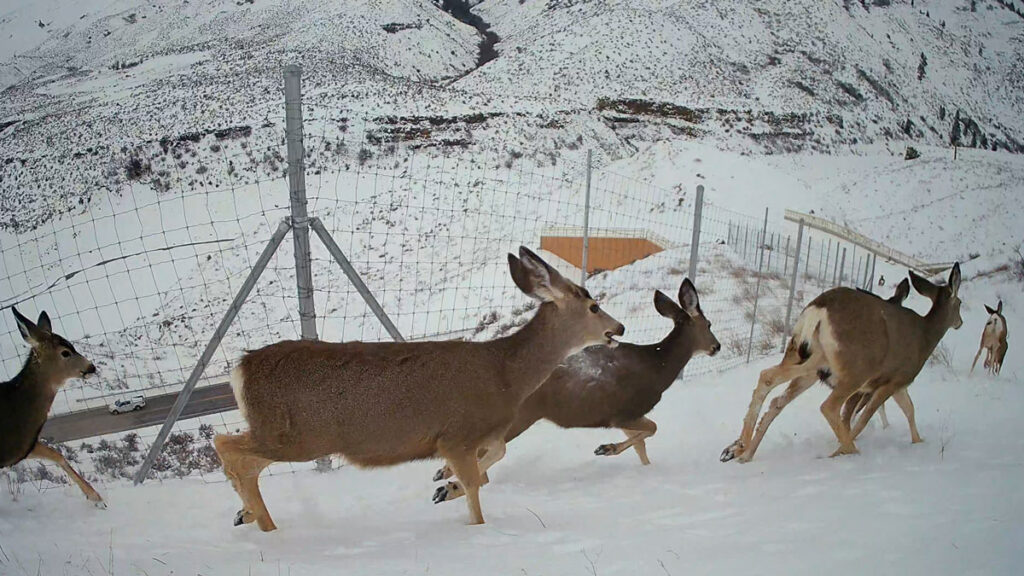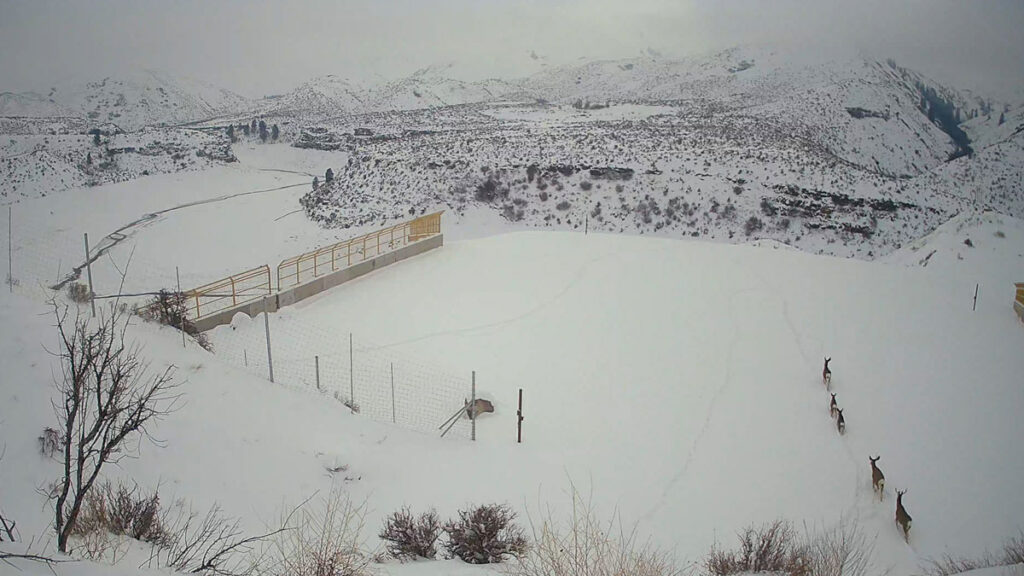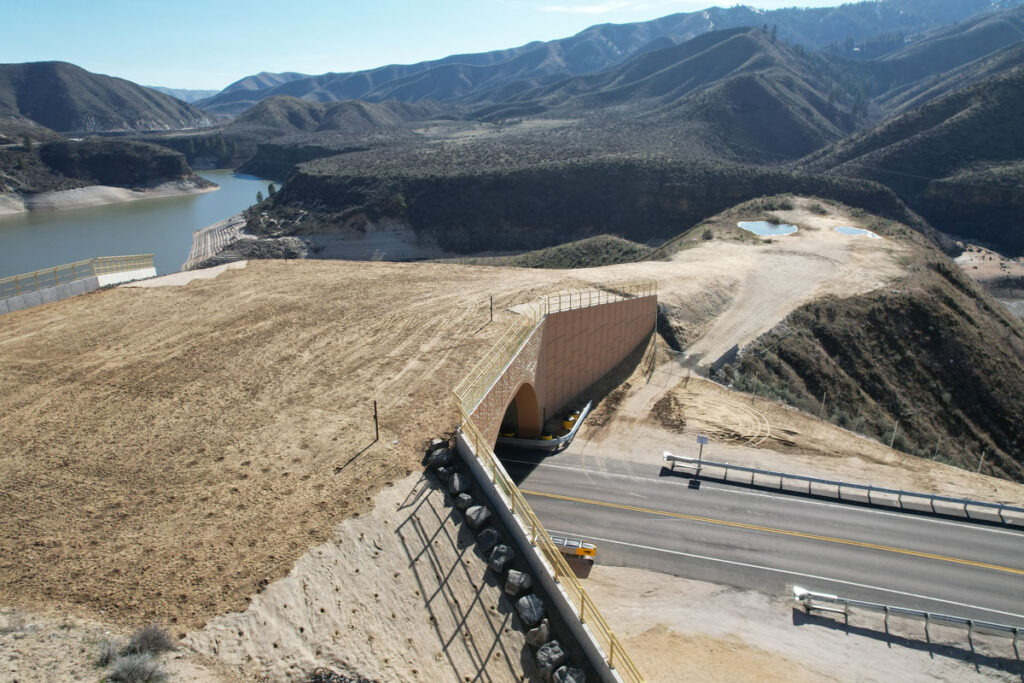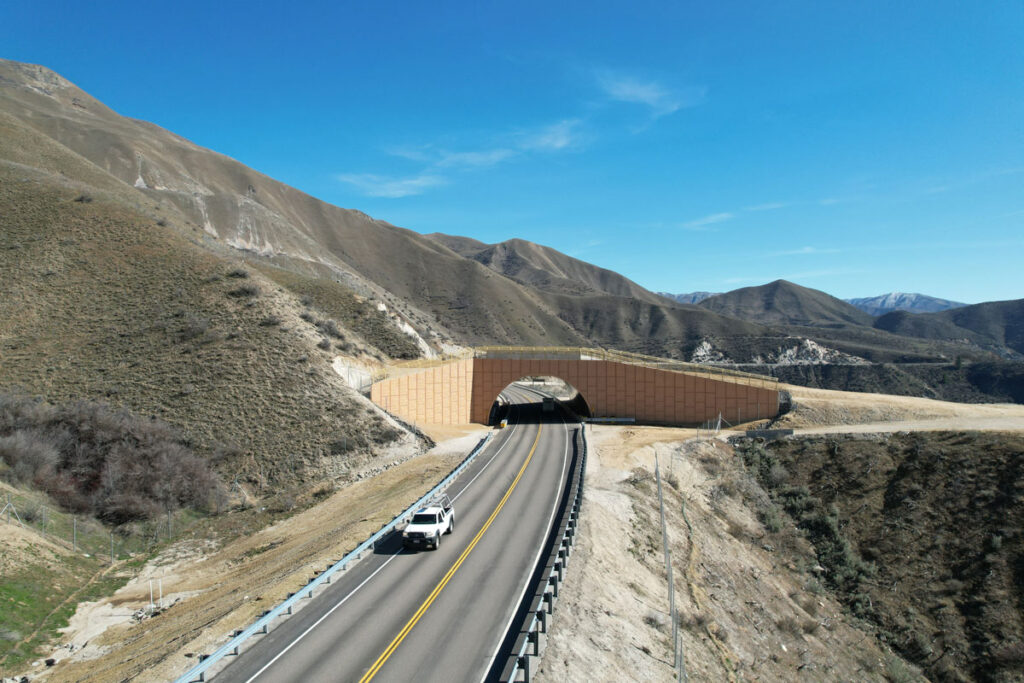The Cervidae Peak Wildlife Overpass was built specifically to foster highway safety and accommodate wildlife
To the naked eye, Idaho State Highway 21 between Mile Post 19 and Mile Post 20 is a non-descript bend on a main route between Idaho’s largest city, Boise, and the state’s copious public lands and its high-country, wild heart.
To the Idaho Transportation Department and the Idaho Department of Fish and Game, however, that stretch of highway is the epicenter of ITD’s mission to provide safe passage for travelers and IDFG’s mission to preserve, protect, perpetuate, and manage Idaho’s wildlife resources for Idaho’s citizens.
It is there, at exactly mile 19.32, that transportation officials constructed the Cervidae Peak Wildlife Overpass. The first of its kind in Idaho, the overpass is a bridge built specifically to foster highway safety and accommodate wildlife. The overpass opened in November 2023, and based on photos from its first winter, it has been a roaring success.


Once animals become more acclimated to the structure, transportation officials believe the bridge will reduce wildlife-vehicle collisions in this area by up to 80 percent.
This project is a win-win supported by a broad-based coalition of supporters including ITD, IDFG, the City of Boise, the Boise National Forest, the Bureau of Land Management, the U.S. Army Corps of Engineers, local businesses, non-government organizations, and a variety of interested citizens. The $7-million project was primarily funded by the Federal Highway Administration’s 2017 Idaho Federal Lands Access Program grant, and hunters contributed matching funds to the project through Pittman-Robertson money.
The wildlife crossing improves motorist safety by reducing risks of wildlife-vehicle collisions. In 2014, the National Highway Traffic Safety Administration reported that 158 people were killed and more than 10,000 injured in car crashes involving wildlife across the country. According to State Farm Insurance, there were more than 1.8 million animal collision insurance claims in the U.S. between July 1, 2022, and June 30, 2023. The average cost from July 2016 to June 2017 was $4,179 per claim. Damage costs have only risen in the last seven years.
An 80 percent reduction in wildlife-vehicle collisions is a major victory on a highway that will only grow busier as Idaho’s population continues to grow.
The wildlife crossing directly benefits the Boise River mule deer and elk herds and the hunters who chase them. Roughly 8,000 to 9,000 mule deer and 1,800 to 2,400 elk cross State Highway 21 twice annually to move between high country summer ranges and the winter range on the Boise River Wildlife Management Area and nearby public lands that surround Lucky Peak Reservoir.


Conserving these migration corridors, which include stop-over areas and crucial winter ranges, is essential to the long-term viability of wildlife populations and the economies that survive on these resources. Accessing seasonal ranges is vital for the existence of sustainably-managed populations of big game animals.
The Cervidae Peak Wildlife Overpass is a key piece of infrastructure ensuring that future, and a prime example of positive collaboration between federal, state, and private conservation efforts.
Learn more about TRCP’s work in the Pacific Northwest HERE.





Fantastic! needs to happen all over the west!
Very important safety measure in Idaho.
Conserving these migration corridors, which include stop-over areas and crucial winter ranges, is essential to the long-term viability of wildlife populations and the economies that survive on these resources. Accessing seasonal ranges is vital for the existence of sustainably managed populations of big game animals. This should done all over that we have wild life. Thank You
Excellent project and more is needed. I lived in NJ for five years and thousands of whitetail are killed by cars. It’s terrible. Every overpass or underpass has a successful impact for many varieties of wildlife. Thank you for reporting conservation success.
I believe in wildlife overpasses , corridors and even underpasses. For everyone who enjoys the outdoors ,for whatever purpose, understands the necessity for them , everywhere we can. But even those who are city dwellers when driving the highways don’t want to hit an animal. Loss of life , human and wildlife can greatly be reduced with the use of overpasses , underpasses, and corridors.
Thank you
These projects here, in other states, and around the world are a vital piece in protecting and preserving the ability of animals to move to reach habitat they depend upon for survival. It is a bright spot in efforts being carried out by a variety of groups. Preservation of habitat and the ability to move are vital for their survival.